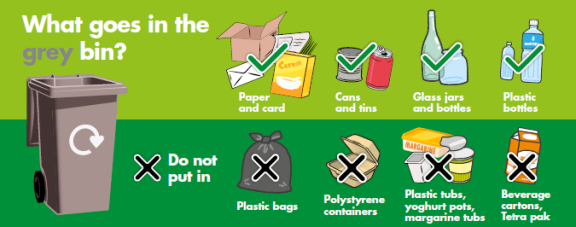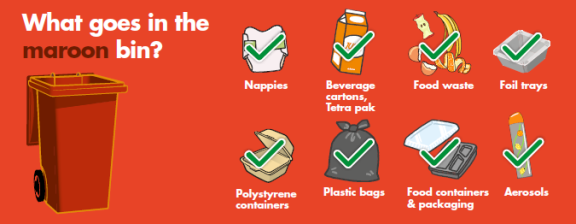What to put in each bin
What goes in the grey bin

Please rinse plastic bottles, cans and tins and glass jars before putting them in your grey bin, and flatten cardboard.
What goes in the blue bin

Do not put card, soil or food waste in your blue bin.
What goes in the maroon bin

Extra waste
Extra waste left next to your maroon or blue bins will not be collected. If you do have extra waste, please visit your nearest Household Waste Recycling Centre - details can be found here.
| Recycling bin (grey) | General waste (maroon) | Garden waste (blue) |
|---|---|---|
|
|
|
Please note that all food waste, including any fruit that has fallen from the trees, should be placed in your maroon bin for collection.
Coming in Spring 2026 - Food Waste Collections
We're pleased to announce the launch of our new weekly household food waste collection service from Spring 2026!
This initiative is a significant step towards lowering our carbon footprint and creating valuable biogas for energy use. By separating your food waste, you'll be playing a vital role in building a more sustainable future for our community. This new service makes it easier than ever to dispose of food scraps responsibly, ensuring they're turned into something beneficial rather than ending up in general waste.
We understand you may have questions about what can and can't be included, how to store your food waste, and the collection schedule. To help you get started, we've compiled a comprehensive Frequently Asked Questions. You'll find all the information you need there for the time being, including the types of food waste accepted.
Please take a moment to review the FAQ's to ensure a smooth transition to this new service. More information about specific collection dates and food waste containers will be announced in the near future, so please keep your eyes open for updates.
We appreciate your cooperation and commitment to making our region greener!